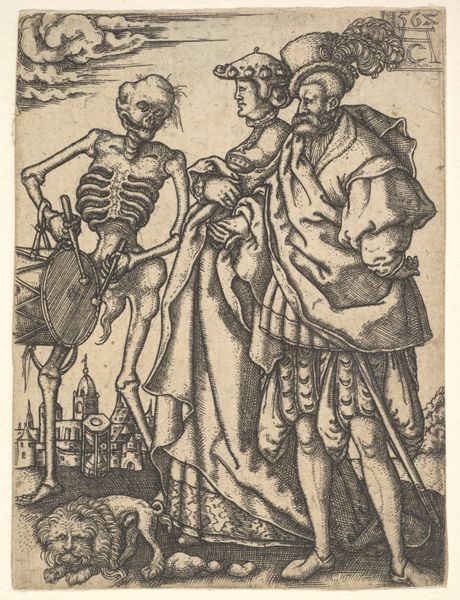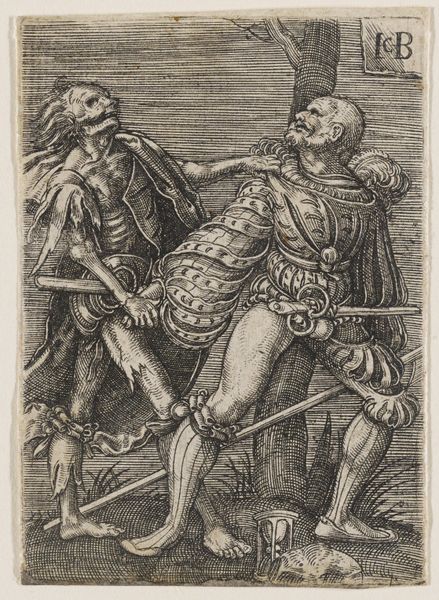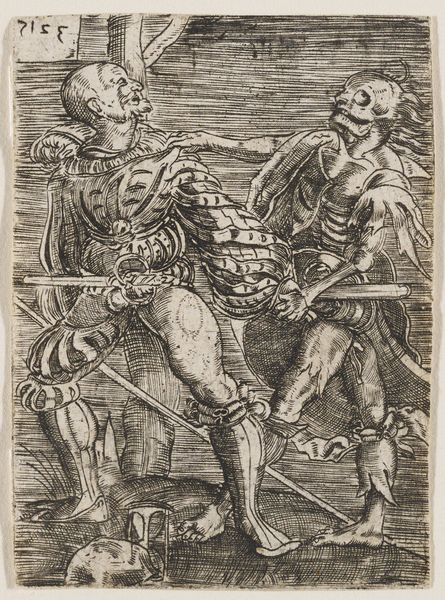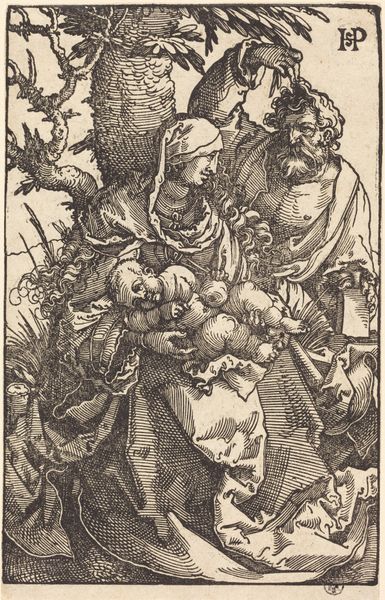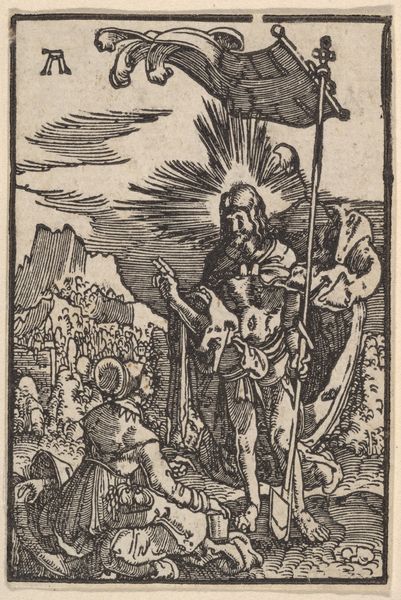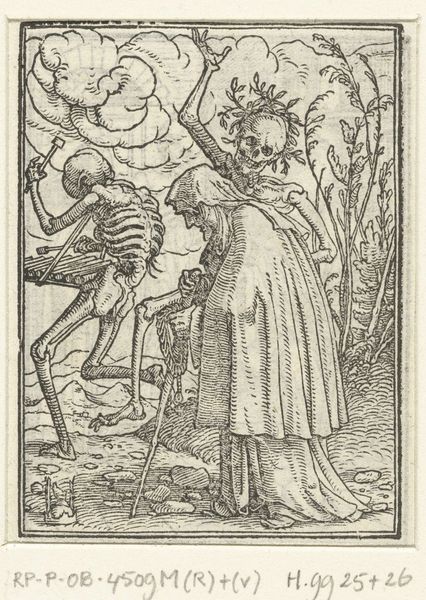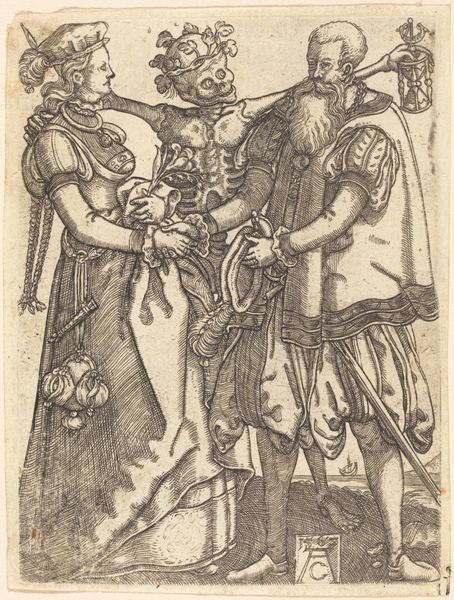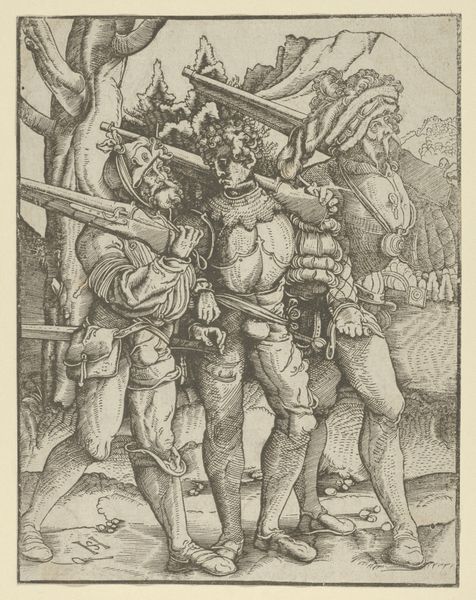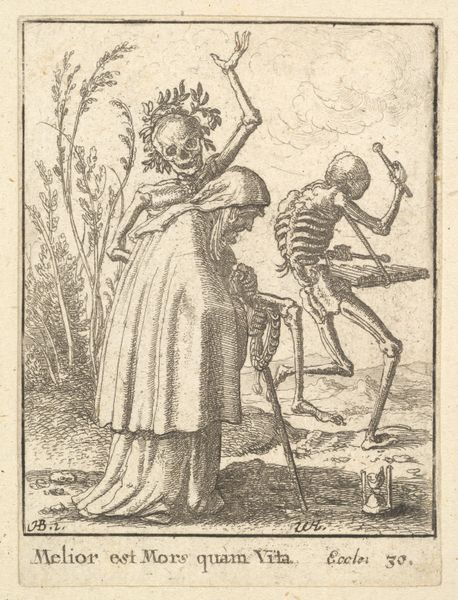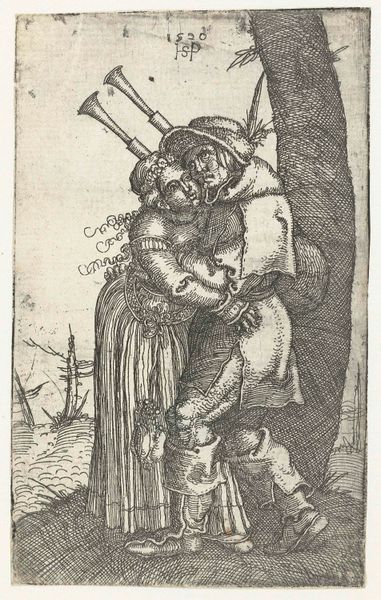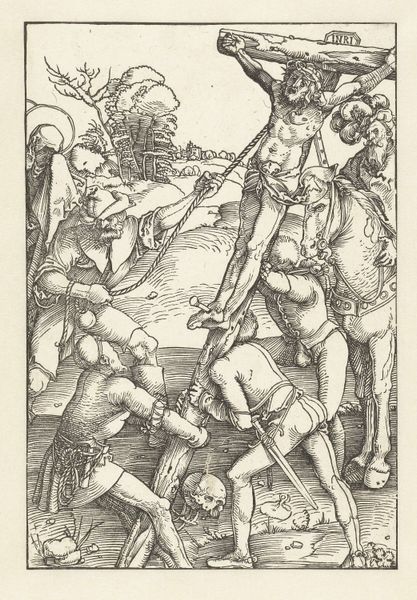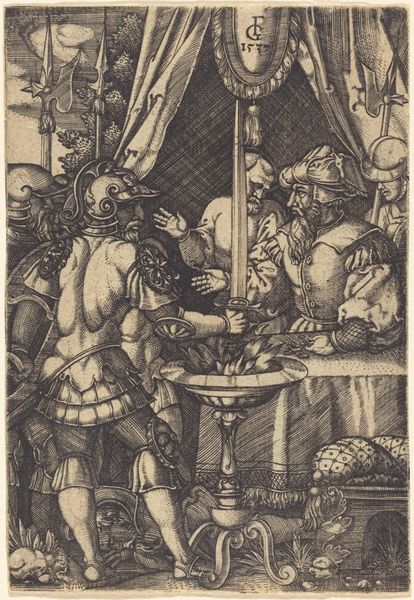
drawing, print, engraving
#
portrait
#
drawing
#
medieval
#
allegory
#
narrative-art
#
pen drawing
# print
#
figuration
#
momento-mori
#
line
#
history-painting
#
engraving
Copyright: National Gallery of Art: CC0 1.0
Allaert Claesz created this image, "Dance of Death II," as an engraving, a printmaking technique, in the Netherlands during the 16th century. The "Dance of Death" was a popular allegorical theme in the late medieval and early Renaissance periods. Here, we see Death personified as a skeleton, leading a king and queen away. This image creates meaning through visual codes, cultural references, and historical associations. The stark contrast between the richly dressed royals and the decaying skeleton highlights the transience of earthly power and beauty. Death plays an organ, perhaps a comment on how death is always present, and the hourglass reinforces the passing of time. Northern Europe in the 16th century was a place of social upheaval. The rise of merchant capitalism, new forms of piety, and challenges to the traditional Church are all part of the backdrop. Historians might consult a variety of resources, such as church records or economic surveys, to better understand its historical context. The meaning of art is contingent on its social and institutional context, of which we must be aware.
Comments
No comments
Be the first to comment and join the conversation on the ultimate creative platform.
